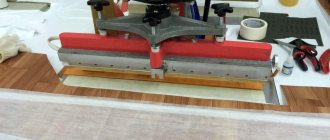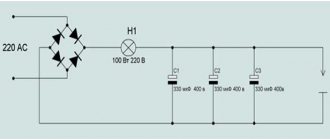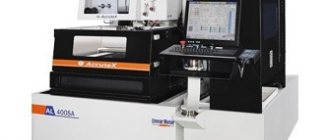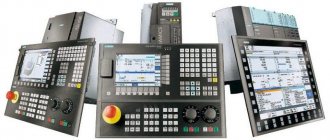Purpose of the machines
Milling machines of this type have three main purposes. These include the following:
- processing end products with a milling machine - axles, shafts and other round-shaped components;
- carrying out preparatory work for surfaces that will be processed with a milling machine at the next stage - forming holes in the end sides of the parts;
- Some machine models are equipped with a function for removing working chamfers.
Let us highlight that most milling and centering equipment involves simultaneous processing of two end parts at once, which speeds up the production process and increases the turnover of finished products. This is especially convenient in large enterprises.
Milling and centering machine 2g942
The semi-automatic machine, equipped with a continuously variable feed mechanism for spindles (milling and drilling), operates on AC power. The hydraulic equipment includes a hydraulic station with a reservoir capacity of 100 liters at an operating pressure in the hydraulic system not exceeding 4.0 MPa.
Machines of this model are integrated into automatic lines at metalworking enterprises. The equipment performs finishing and rough milling of shafts and is used to punch centered holes in them. It is also possible to equip small enterprises such as workshops or private households with machines.
Technical characteristics differ in a number of parameters:
- dimensions of the drill and parts to be processed;
- hole diameters, milling methods;
- cutter size (end cutter), number of spindles.
Key Features
The list of main operations performed on the 2g942 semi-automatic turning machine includes:
- double-sided processing of ends by milling together with drilling of centered holes;
- turning necks located at the ends of cylindrical metal parts (shafts);
- continuous alignment of the end platform with a maximum diameter of 40 mm around the hole (counterbore);
- implementation of circular trimming of end sections and boring to increase the diameter of holes.
Varieties 2g942
The 2g942 family of semi-automatic machines used for turning metal parts includes three main types of machines. Models with horizontal spindles for milling and drilling differ in the length of the workpiece:
- 2G942.04 – length parameters within 100-500 mm;
- 2G942.00 – can process workpieces with a length of 100-1000 mm;
- 2G942.08 – the length of the future part can reach 2000 mm.
The machines operate with sequential loading, milling and centering, as well as unloading of workpieces. The heads performing milling and drilling move along a fixed workpiece.
The spindles located on the left and right do not have synchronization mechanisms; their simultaneous operation is ensured by the presence of a hydraulic drive.
As a result of the full cycle of the processing process, ending with facing, a high precision base is provided for further processing activities.
The milling and centering machine 2g942 can be used for mass or large-scale production of parts in machining shops. Centering machines are equipped with continuous production complexes, using them in conjunction with automatic loaders.
Principle of operation
This is not to say that the work process is particularly complex, but only qualified employees are allowed to work on the equipment. So, the operating principle of a milling-centring machine is as follows.
The metal workpiece is placed in a vice specially designated for this purpose, and is well fixed in a stationary position. A milling cutter is started, which processes one part from both sides, ensuring maximum symmetry. The processing head “drills” the center hole according to the specified parameters.
The finished product, as a rule, after the milling machine, is treated with special brushes with a certain rigidity, which remove metal shavings and make the surface smooth. After the work is completed, the part is released for sale.
Processing scheme
Let's look at the processing scheme in more detail:
- after fixing the workpiece in a vice, the machine starts the milling process, which begins to be carried out using the transverse movement of the equipment heads with the provided drill pairs;
- after moving the carriage in the transverse plane, the drilling spindles begin work, making it possible to prepare the working surface for the formation of holes;
- Next comes the process of milling the center holes.
Depending on the type and model of the milling and centering machine, the processing scheme may vary slightly. However, in general, the sequence of the process is exactly this.
How does it work
Thanks to double-sided milling and centering of the ends of workpieces, performed simultaneously, it is possible to prepare the base surfaces for other types of production processes. The simultaneous execution of two types of work is ensured by two aggregate installations for turning ends, operating together.
Device
According to the specification, milling and centering machines have a set of the following assembly units:
- a frame cast from cast iron, equipped with two guides, as the basis of a turning complex;
- a carriage equipped with a pair of spindles (milling and drilling), which are capable of alternately moving along the surface of a fixed workpiece;
- drives (hydraulic) designed to feed a center drill and an end mill, as well as a stop for the moving part.
The step-by-step implementation of milling and centering work is facilitated by auxiliary units together with controls. Milling and drilling units are placed in pairs inside the power heads. The product prepared for processing is installed in a special vice, secured with a hydraulic clamp.
Approximate processing scheme
When starting processing, the product is secured in a vice, secured using hydraulic clamping.
Stage 1. The system performs milling of the ends of workpieces during the transverse movement of power heads equipped with milling and drilling pairs.
Stage 2. When the movement of the carriage in the transverse plane ends, the work of the drilling spindles begins. The cutting tool prepares the centering holes (base holes).
terms of Use
A working milling and centering machine simultaneously processes two ends.
The presence of a hydraulic system allows you to secure the workpiece prepared for processing and implement the feed of the cutting mechanism. Hydraulic and power supply equipment is located next to the machining machine in a separate cabinet. The hydraulics are connected to the machine by hydraulic lines, and electrical cables are laid from the electrical equipment.
As milling and centering work progresses, it is necessary to monitor the stages of movement of the table, the manual feed of which must be free. To eliminate problems (stiff movement), loosen the clamping clamps and then monitor the quality of movement. If vibrations occur, the machine is stopped to determine the reasons. One of the reasons may be unreliable fixation of the cutter or fastening of the workpiece.
To assess the correct installation of the cutter, you will need to check:
- general condition of the instrument;
- quality, correct sharpening;
- absence of obvious defects in the fabric;
- strength of fastening of cutting elements;
- degree of equipment wear after intense load.
If traces of dulling or slight crumbling of the metal on the edge of the teeth are found, the cutter will have to be replaced. It is equally important to monitor the cleanliness of the sedimentary planes of the cutting device; accumulated dirt should be removed in a timely manner. After changing the cutter and fixing the new blade in the spindle, you should definitely check the level of runout of the teeth of the cutting mechanism.
Safety regulations
The operation of metal-cutting machines equipped with rotating elements requires mandatory compliance with safety rules. Before operating the device, you need to prepare a set of protective elements:
- overalls with fixed parts to prevent winding on the spindle;
- a tight-fitting headdress that reliably hides strands of hair;
- safety glasses to protect your eyes from chips while processing parts;
- gloves made of dense material for manipulating equipment parts.
When working with metalworking complexes, safety plays an important role in the process of removing and installing a cutter. The teeth of the spindle cutting mechanism are covered with a special casing that protects the worker’s hands from injury.
After carrying out repair work, be sure to check the tight fit of the shank in the spindle mandrel - there should not be even the slightest play. When the cutter and arbor are fixed, check the functions of the gearbox to make sure that the spindle cannot be turned.
Machine specifications
The milling-centring equipment includes a number of main units that are responsible for performing the main processes. First of all, this is a bed that has a pair of guides. It belongs to the base of the machine. Important components also include the carriage, on which two spindles are securely fastened - a drilling and a milling spindle. The hydraulic vice is also classified as the main unit.
In addition to the main specification, the equipment has additional components and mechanisms. These include control systems and operational functionality. Please note that the equipment may vary depending on the machine model and its equipment at the manufacturer.
Equipment characteristics
Before you get acquainted with the characteristics of centralizing machines, it is important to understand what they are intended for. It also wouldn’t hurt to find out what structural parts these units consist of (that is, their specifications).
Purpose of the machine
The main purpose of machines of this class can be represented by the following list:
- Milling of the end parts of rotating bodies (these could be shafts or axes of future products, for example).
- Preparation of base surfaces for subsequent alignment of holes in the ends of parts.
- Some machine models provide the ability to remove working chamfers and rough machining of base journals.
Note! On most samples of this equipment, it is possible to process two ends at once.
This feature allows you to reduce the preparation time of parts due to the fact that the installation and fixation of workpieces is noticeably simplified. As a result, it is possible to save on equipment equipment, simplify its maintenance and increase the overall productivity of work operations.
Specific objects where the operation of milling and centering machines is allowed are machining shops, as well as small workshops within an enterprise or private household. Products of this type belong to the category of semi-automatic equipment, which allows their use as part of automated control systems.
Specification
The specification of milling and centering machines includes the following mandatory components:
- A bed with a pair of guides, which is the basis of machine tools.
- A carriage with a milling and drilling spindle attached to it, alternately moving along the axis of the workpiece being processed.
- A hydraulically driven vice into which the workpiece is placed before processing.
In addition, the machine contains many auxiliary units, including controls and operating functions.
The order of operation of the machine equipment specified by the technical requirements is ensured by the alternate use of milling and drilling units, placed in pairs in the power heads. When they move transversely, the ends of the workpiece installed in the hydraulic unit are milled.
Upon completion, the drilling spindles come into operation, through which the centering holes are prepared. The parallelism of the working planes and the centering of the drilling zones is ensured due to the fact that their processing is carried out after a one-time installation of the part.
Specifications
The technical characteristics of milling and centering machines depend on the model of the equipment and its equipment. However, there are a number of general indicators that are established by GOST. For example, the material used to make machines is hardened tool steel with a low carbon content. It is this that extends the life of the unit and makes it as resistant to external loads and mechanical damage as possible.
The material that the machines process is steel or durable cast iron. Non-ferrous metals of high strength and hardness are also used. Almost all equipment models are capable of milling steel with inserted alloy parts.
terms of Use
Milling and centering equipment must be operated in equipped rooms - workshops, where effective artificial and natural ventilation is provided. The area of the room must be of such size that during operation of the machine or its downtime there is quick and free access to any of its mechanisms.
Sharpening of individual tools that are included with the unit must be carried out as required. That is, when the cutting part of the tool becomes dull. When using the machine, it is important to ensure that the workpieces are securely fixed in the vice to avoid industrial accidents.
In cases where the cutter begins to crumble (visually determined by the presence of metal chips or sharp nicks on the part), it must be replaced. Otherwise, the milling of holes will result in deformations and defects. During the operation of the machine, it is important to monitor all actions, which is carried out directly by the operator and the turner.
Features of operation of milling-centring equipment
When operating equipment of this class, it is first necessary to control the ease of movement of the table by manual feed. If you find any problems (too tight movement, for example), you will need to loosen the locking clamps and then recheck the quality of movement.
If vibrations occur, you need to stop the machine and take all possible measures to get rid of them. To do this, it is necessary to carefully examine the condition and reliability of the fastening of the cutter and workpieces, as well as special devices used in various cutting modes.
Installation and change of cutter
Before securing the cutter in the spindle, the worker will have to perform the following preparatory operations:
- Check the condition and quality of sharpening of the tool, which should not show obvious signs of cracks, burns or crumbling of the material.
- You also need to make sure that the teeth fit firmly in the cutter body and check their wear after intensive use of the equipment.
- In a situation where the cutting edges are very dull or slightly crumbled, the tool will need to be replaced with a new sample.
Additional Information! During the adjustment process, it is also necessary to ensure that dirt and cleaning cloth residues do not accumulate on the settling surfaces of the milling mandrel, as well as on the collet and spindle.
Upon completion of fixing the cutter in the spindle, it is necessary to check the level of runout of the cutting edges of the tool.
Next, you will need to configure the feeds to the modes specified in the task, after which you can install and fix the stops of the automatic shutdown mechanism.
Safety regulations
To ensure safe operation of milling and centering equipment, a number of requirements must be met. First of all, workers must have special clothing that has a fixation to avoid wrapping around the spindle. Secondly, a headdress that protects your hair. It is also important to wear special glasses that prevent metal shavings and sparks from getting into your eyes. Mittens should be made of dense fabric that ensures safe work with hot and sharp parts.
The room in which milling work is carried out must meet the requirements of GOST. It is mandatory to install a fire alarm system connected to the water supply. There should be no flammable raw materials near the machine operation that could ignite or explode due to sparks. The room must have high-quality lighting, which allows you to easily carry out work with small and large parts.
Also, for safety reasons, special warehouses or racks must be provided that are used for storing and packaging finished parts. It is prohibited to store finished products in the immediate vicinity of a working machine, since easy access to the equipment from any side must be ensured.
In cases of a short circuit, machines must be turned off immediately, regardless of the stage of product readiness. All equipment must be grounded and have fuses. Also, machines must have quality certificates from the manufacturer, which confirm the safety of the units.
What does a passport look like?
A passport is a necessary document issued by the manufacturer for each milling and centering machine. It must meet certain requirements and include:
- general information about the machine;
- photographs showing both the main components of the unit and general photos;
- all the necessary characteristics corresponding to this or that equipment;
- complete set that is included in the machine or attached to it;
- safety rules that are observed during installation, dismantling and operation;
- mechanism lubrication system and instructions;
- device of a milling and centralizing machine;
- instructions for use;
- instructions for transportation and installation.
Please note that the manufacturer is required to provide a passport. In case of failure, it is not recommended to purchase the machine for your own safety. In addition, if equipment is purchased for production, problems may arise with inspection services, which will also not benefit the owner of the enterprise.
What determines the cost of equipment
The price of a centering milling machine depends on a number of factors. First of all, it is power, efficiency and productivity. The higher these indicators, the more expensive the machine. The price is also affected by its size, basic and additional equipment.
Other characteristics also affect the cost of equipment. For example, the thickness of the material being processed, the metal from which the equipment is made, the warranty period. Functionality also accounts for the price. If, in addition to milling, the machines have additional functions and any automated mechanisms, the final cost of the unit will be higher.
Please note that the price is also affected by the region in which the purchase is made. Thus, in small cities the cost of the machine will be an order of magnitude lower than in large cities. In addition, it is recommended to purchase units directly from the supplier, and not through resellers. This will help you save a considerable amount. However, do not forget that you will have to spend money on transportation to the workshop by hiring a truck with a large carrying capacity.
Overview of models for industrial production
There are a number of models of milling and centering machines that are widely used in large enterprises. They allow you to quickly and accurately perform their work, have additional functions, and consume a small amount of electricity. Let's look at the most basic models.
The EM535M, MP71M and MP76M machines are distinguished by high power, a large number of processed materials, and wear resistance. They allow the production of finished end products up to 1 meter long and up to 16 cm thick. They have several spindle speeds and are supplied with several milling heads of different diameters.
Also noted are the 2G942 and MP-71 machines, which have automatic loading devices that ensure an accelerated workflow even at the largest enterprises. Used independently or in a conveyor line. Powerful, durable, stable and reliable. Meets GOST requirements and does not require special maintenance.
2G942 milling-center-turning machine. Purpose and scope
The 2G942 machine is designed for processing the ends of parts such as shafts in serial and mass production with the installation of automatic loading devices and as part of automatic lines.
Basic operations performed on a semi-automatic machine:
- end milling and drilling center holes on both sides
- turning journals at the ends of shafts
- Continuous counterbore up to a diameter of 40 mm can also be carried out.
- ring pruning
- boring
Design features of the milling-central-turning machine 2g942
The milling and drilling spindles are positioned horizontally.
Loading, milling, centering and unloading of workpieces is carried out sequentially. The workpiece is stationary; the milling and drilling heads move.
The left and right drilling and milling heads are not equipped with synchronization mechanisms. The simultaneous operation of the left and right spindles is ensured by a hydraulic drive.
The feed drives for drilling and milling spindles, clamping parts, and workpiece stops are hydraulic.
Processing on the machine in one installation the ends of the workpiece, drilling center holes on them, turning the base journals ensures high accuracy of the bases for further processing, and the processing of the ends is final.
The semi-automatic conveyor is auger. Screw diameter - 150 mm.
Semi-automatic accuracy class N according to GOST 8-77.
The quality category is the highest.
The corrected sound power level LpA should not exceed 102 dBA.
The level of vibration that occurs at the workplace when machines are operating in operational mode in accordance with GOST 12.2009-80.
Limits on the length of processed parts, mm:
- 2G942.04 — 100-500
- 2G942.00 — 100-1000
- 2G942.08 — 100-2000
Review of models for the home workshop
For metal processing at home, as a rule, budget machines are chosen. Of course, price is of great importance, since inexpensive units usually perform a limited range of functions. But if we are talking about home use and not for industrial purposes, such equipment will be ideal.
Home models are characterized by maximum compactness, low weight, and low noise levels during the working process. These include models 6B75V and AF222. They are quite powerful and allow you to process parts made of steel and cast iron. They work quickly and efficiently. Great for small parts.
To summarize, milling and centering machines are indispensable equipment for the production of metal end parts. They allow you to quickly and efficiently mill holes inside, which is necessary for the manufacture of metal components for machines and mechanisms. Today the market allows you to buy both budget models and more expensive ones. Manufacturers offer a large selection of equipment for each consumer, which makes it easy to choose the right unit for personal or industrial purposes.
Good luck with your choice!
Which machine to choose for a home workshop: advantages and disadvantages of models
Milling machines for home workshops resemble drilling machines, which also include a frame and a column with a spindle mounted vertically on it. Unlike factory models, they provide a special mechanism for moving the table under the working cutter, which allows you to grind the part in three planes.
Important! If you have the appropriate equipment, you can use household equipment to process workpieces made of any materials (not just metal).
Before choosing a machine for home use, you need to consider the following parameters:
- Height of the spindle above the work table.
- Permissible milling diameters.
- Machine power.
- Ease of installation and connection of equipment, as well as its weight.
The correct choice of the first of these parameters allows you to install a fairly large workpiece, and the power of the machine allows you to expand its functionality.
This parameter for household equipment can vary in the range from 150 to 750 watts.











